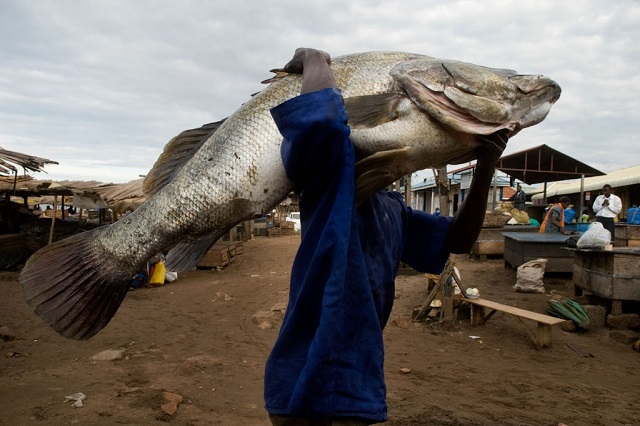
Kampala, Uganda | THE INDEPENDENT | Researchers at the National Fisheries Resources Research Institute-NaFFRI are optimistic that their dream of rearing the Nile perch in ponds might be attained by 2020.
The Nile perch, locally known as Mputa, is a native species to Lake Albert. The Nile perch was introduced into Lakes Kyoga and Victoria basins in the mid-1950s, but its presence in Lake Victoria was first noted in the 1960s and in a span of 10 years it had established fully in the new eco-system.
At the moment, the only place where one can get Nile Perch is the lake. However, due to its ever-growing demand in the export market, coupled with threats to its existence like pollution in Lake Victoria, scientists have been trying to find means of rearing Nile Perch so as to boast and sustain its production.
Dr Edward Rukunya, the Fisheries Resource Director at the Ministry of Agriculture, Animal Industry and Fisheries, says several attempts which root back from early 2000s have been hitting a dead end after finding it difficult to formulate a suitable substitute feed for the Nile Perch.
Earlier trials pointed at rearing Nile perch in a mixed system, where it could be introduced to a pond that already has tilapia and other fish species. This meant that a farmer rears other spices to feed the perch.
However, Dr Rukunya observes that the mixed system could be highly expensive and unsustainable.
Dr Anthony Taabu Munyaho, the Director NaFFRI, notes that they have been conducting several studies at their Kajjansi station on the feeding and have so far been looking at two different possibilities which are showing good results towards a fine product which they will ‘proudly share to farmers as soon as it is ready.
Dr Munyaho observes that besides the feeds huddle, the Nile perch is known for its need for clean and clear waters with sufficient oxygen concentrations which aspect is also paramount if the Nile perch is to be reared in ponds.
He, however, argues that domesticating Nile Perch can generate more income to fish farmers who now rear mostly only two species; cat fish and tilapia.
Dr Rukunya is also hopeful that the development will not only benefit farmers but rather impact the fish industry which is now the country’s the second largest foreign exchange earner, contributing 2.6 per cent of Gross Domestic Product (GDP) and 12 per cent to agricultural GDP.
*****
URN
 The Independent Uganda: You get the Truth we Pay the Price
The Independent Uganda: You get the Truth we Pay the Price


